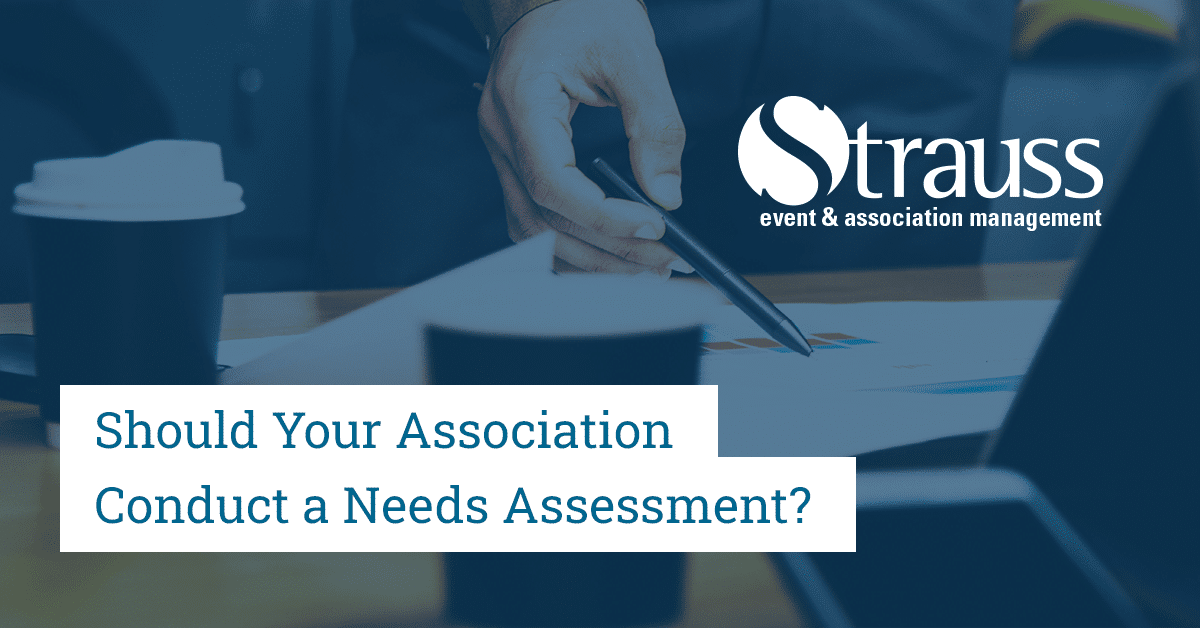Within every association, there is a need to evaluate what is currently being achieved against what is desired to be achieved. The evaluation could be focused on individual performance, educational resources, and committee production, among endless other possibilities. There are several ways to determine what areas need to be improved or targeted by future resource management, one of which is underrated and should be understood among association managers and members alike, and that is the Needs Assessment.
What is a Needs Assessment?
A Needs Assessment is exactly what it sounds like; it is a tool for assessing the needs of a group, organization, association, or any other collection of people. A Needs Assessment is a tool that will help an association determine and address the gaps in desired outcomes. This considers the difference between the current resource management levels and what is missing to achieve the desired outcome. It is an essential tool in any strategic planning initiative. A Needs Assessment will help identify and understand areas that need improvement and help determine the best course of action for reaching said goals.
How To Conduct a Needs Assessment?
1. Prepare
To properly conduct a Needs Assessment, you must ensure you have approval from different departments to gather necessary data, as well as have team members on board to cooperate and provide feedback throughout the process. This step will allow you to identify any concerns, establish the areas that may need additional resources that can be remedied, and determine sources of data from which you may gather information. This can be done by forming a Needs Assessment Committee, or if your team doesn’t have the manpower to spare, then you know you have to ask for data and reports to be submitted.
2. Gather and Analyze
This step directly feeds off of the first step. This is where you will gather the data you determined was necessary to conduct the assessment. The collected data needs to consider both the current state of the focus area and the desired state of the area. Once this data is collected sufficiently, you can then see where departments are lacking or where the room for improvement is. A list should be created to outline the needs, which can be determined based on the data. Make sure that the needs are listed in order of priority and realistic achievability. To sufficiently create this list, you can base the rank on several factors, including the level of discrepancy from the need to achievable outcomes, as well as costs, difficulty, and risk, among other considerations.
3. Make Decisions
Once your list of needs based on priorities is set, you can move forward to the third step, which is to make decisions based on the information that has been gathered and analyzed. It is important to now identify possible solutions to the gaps in needs that the association has, while consulting with team members about a potential action plan to achieve these goals, with timelines and resource requirements in mind. A final report is ideal to outline the processes conducted, needs identified as well as recommendations for follow-up evaluations to understand progress.
While there are many ways that an individual can approach conducting a Needs Assessment, it is most important to consider what your association needs, what you want to achieve, and consider using or altering any steps that will make the assessment the best for you. While this outlines the process for the entirety of a full Needs Assessment, there are opportunities to achieve the same results on a smaller scale, whether your assessment is for a small department under five people, or if you are juggling many other tasks and a full assessment is not realistic. There is always room for improvement and resource efficiency, and can be determined with a Needs Assessment survey. For other ideas on how to benefit your association from different tools and programs, check out my colleague’s blog here.
In order to determine if your association should conduct a Needs Assessment, ask yourself if there are any areas that need improving. Whether or not you have the resources available to achieve these improvements, it is wise to conduct a Needs Assessment in order to itemize, prioritize, and utilize what your association can offer to better itself for the future.

